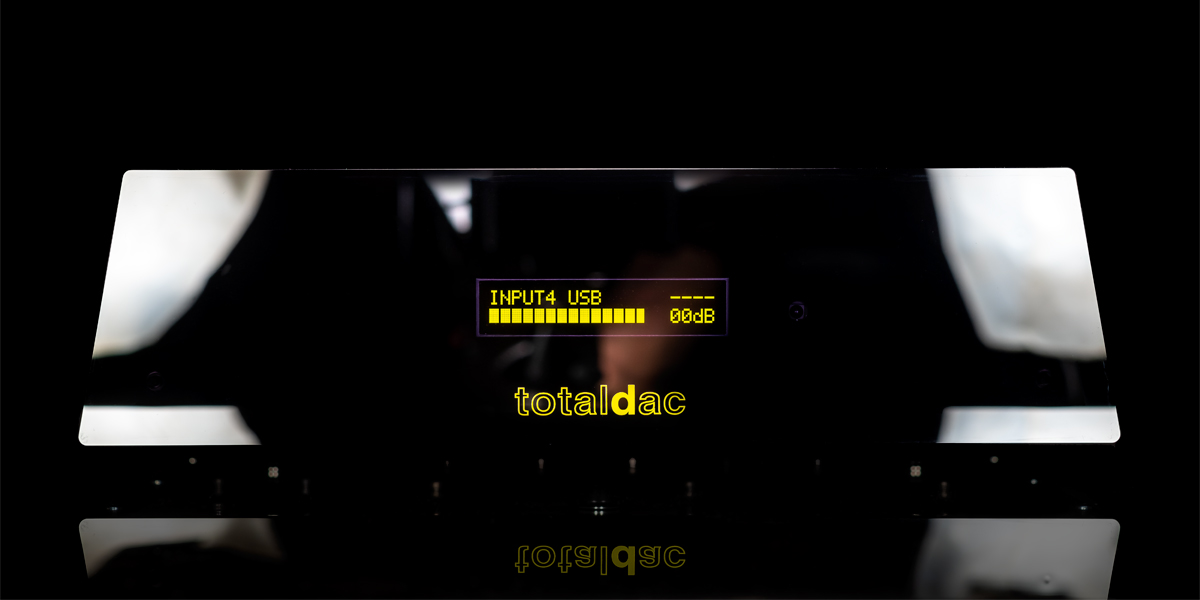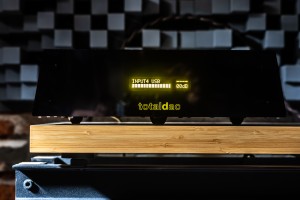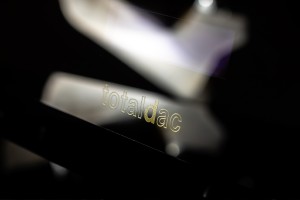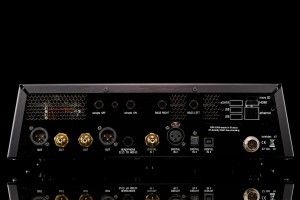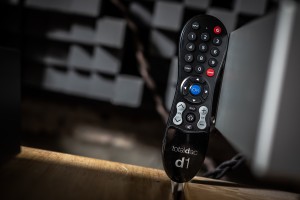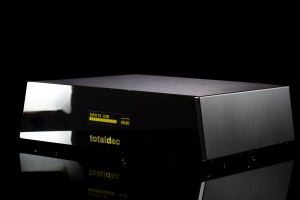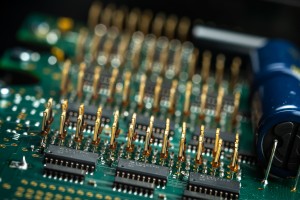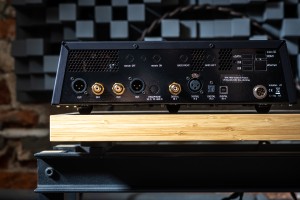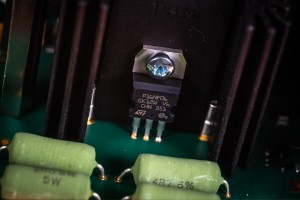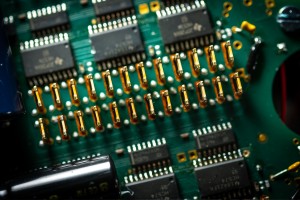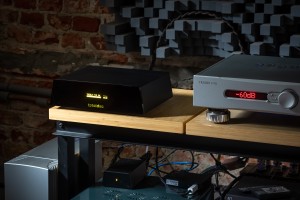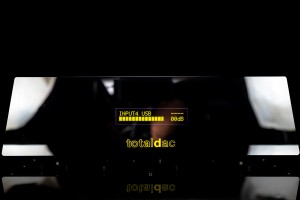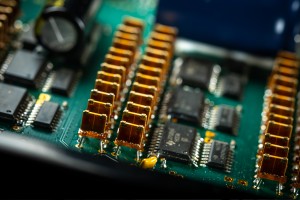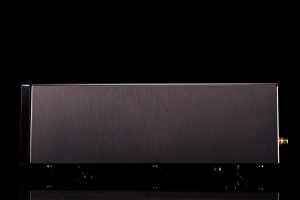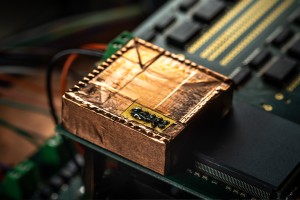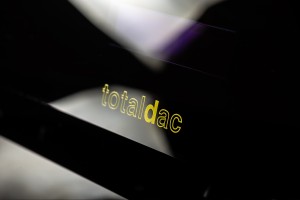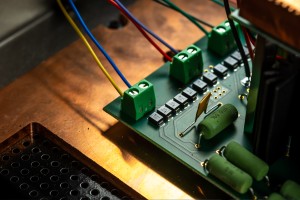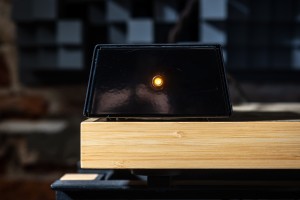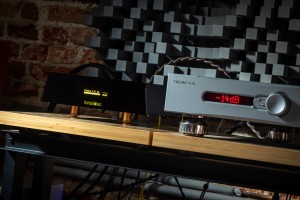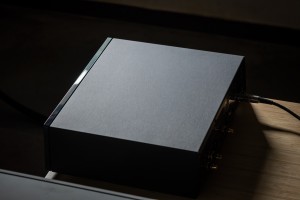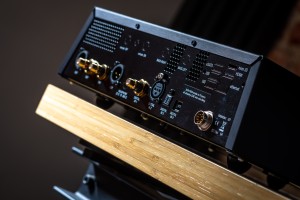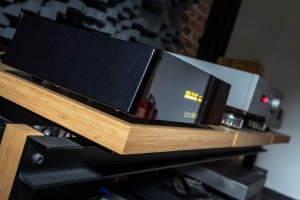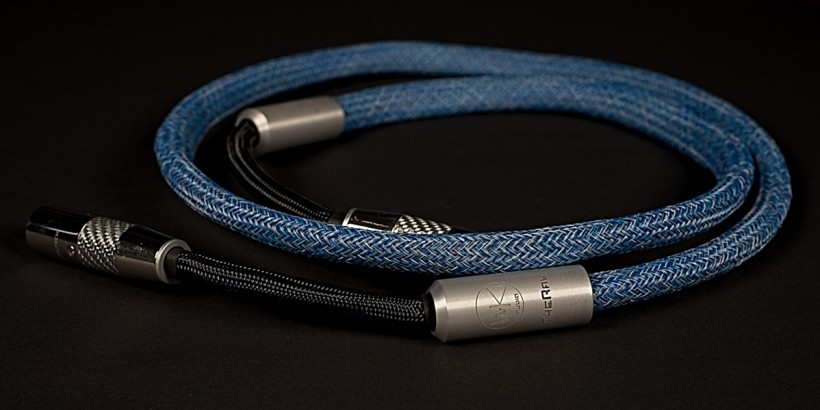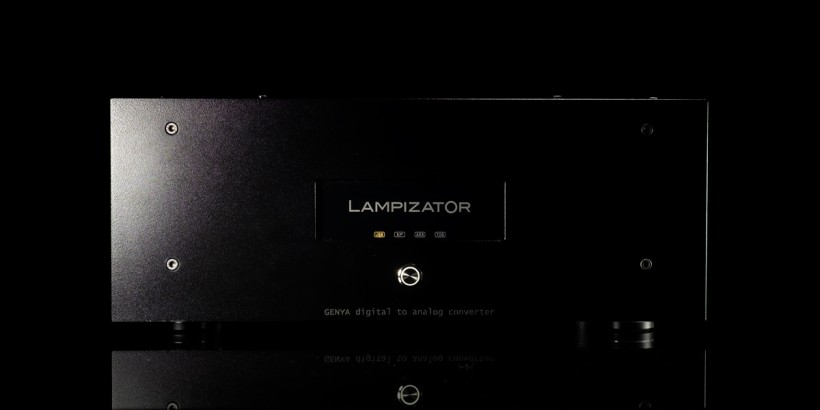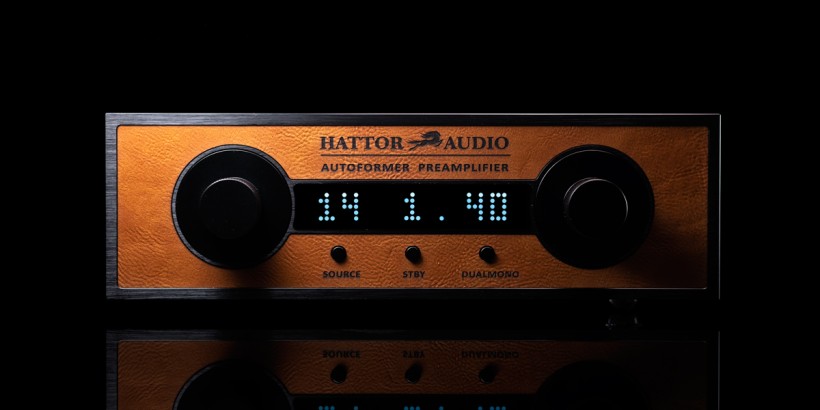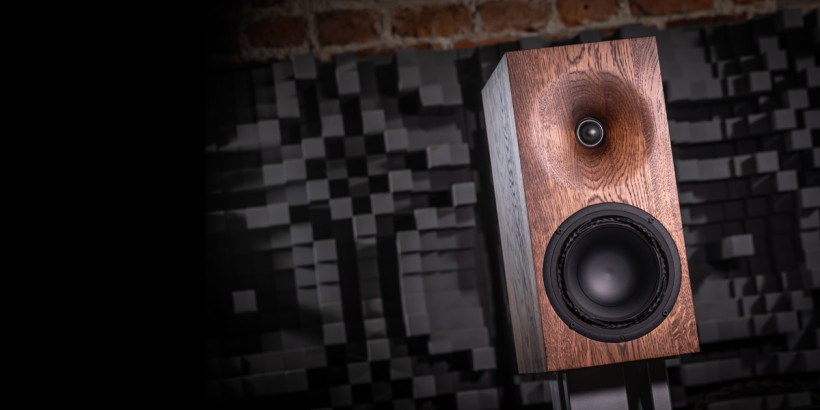A while ago the entire Totaldac D/A converter offer underwent a major circuit change due to the implementation of the manufacturer’s new Unity architecture. Upon expressing interest in any of these new designs, Totaldac d1-biunity DAC was sent my way soon after. Now it’s time to tell its story. Enjoy!
The total DAC
Time goes by fast. The most recent Totaldac review published here at HFK dates back to August 2018. Although it’s been this long, my memories about this French audio house and its founder Vincent Brient are fond. While his work is excellent, personal reasons make it so, too. Prior to launching this site in March 2016, my track record narrowed down to the local audio press and several stories published at Srajan’s 6moons.com. As a newcomer to the global audio scene with my own place that was hungry for content, I started in the same way each reviewer wannabe does. Many mails with loaner requests were sent out. Most remained without any answers. Some included a polite no. A few started a conversation that led somewhere. I’m writing about this because Vincent was one of the very first manufacturers who entrusted me with one of his exotic costly machines. Fast forward to today and I still remember well our first interaction, and how informative and quick his mail responses were.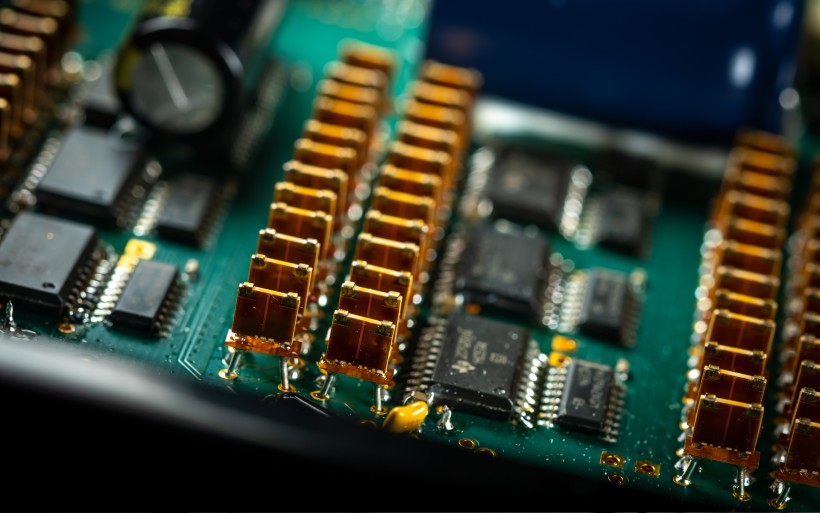 A short glimpse at the Totaldac site already tells us a lot about the company’s profile. Clean, factual, stripped from marketing fluff and with the full price list available, it’s a rather unusual sight by today’s standards and wholly positive at that. This audio house was established in 2011 by Vincent who first and foremost is an engineer with over a decade of experience in the telecommunications sector. In the audio industry he’s primarily known for his DACs. While this product group still remains his core business, the Totaldac roster significantly expanded over the years. Now it also lists power amps, speakers, active crossovers, various network components, digital transports, reclockers, cables and a bunch of additional options. The grand master plan behind all this lot is simple. When Vincent exhibits at a venue, he shows a system based exclusively on his own hardware, so that visitors have a firm idea about just the kind of sound he pursues. The man’s horn-loaded high-efficiency speakers with large bass cones communicate rather well what that is. As I was about to learn, today’s DAC follows the alike sound aesthetic too.
A short glimpse at the Totaldac site already tells us a lot about the company’s profile. Clean, factual, stripped from marketing fluff and with the full price list available, it’s a rather unusual sight by today’s standards and wholly positive at that. This audio house was established in 2011 by Vincent who first and foremost is an engineer with over a decade of experience in the telecommunications sector. In the audio industry he’s primarily known for his DACs. While this product group still remains his core business, the Totaldac roster significantly expanded over the years. Now it also lists power amps, speakers, active crossovers, various network components, digital transports, reclockers, cables and a bunch of additional options. The grand master plan behind all this lot is simple. When Vincent exhibits at a venue, he shows a system based exclusively on his own hardware, so that visitors have a firm idea about just the kind of sound he pursues. The man’s horn-loaded high-efficiency speakers with large bass cones communicate rather well what that is. As I was about to learn, today’s DAC follows the alike sound aesthetic too.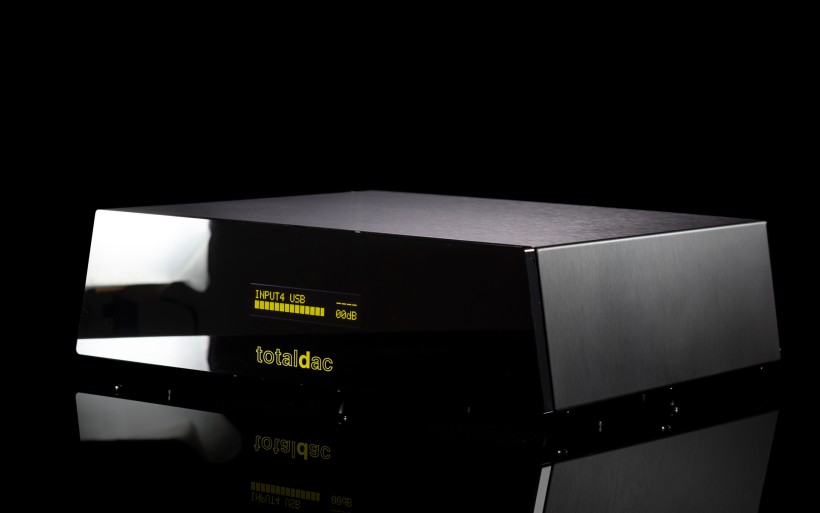 Vincent’s DACs belong to a niche club of devices built upon an external resistor network to convert the incoming binary data to voltages. This method known as R-2R, and named after the resistor values of either R or 2R, has been around for decades. In most cases however a resistor ladder inside a chip executes the key conversion process. Even today some such units, i.e. Philips TDA1541 and Burr-Brown PCM1704UK, have quite the following among digital enthusiasts. While Vincent’s matrix built upon costly naked Vishay 0.01% VAR Bulk Metal® Foil resistors is the route uphill, low circuit SNR and high switching precision are the upshots beneficial for sound quality, so just the right reasons for all the effort. The number of these parts determines each total DAC’s performance level and is the major aspect that sets them apart. Models d1-core and d1-unity respectively priced at €5’600/12’500 feature 100 Vishays each, while today’s d1-biunity has 200 of them inside and €18’250 on its sticker. The company’s second best – d1-triunity – gets 300 resistors and sells for €24’000. The four-box d1-sublime flagship packs twice as many and wants €50’000. No wonder. It comprises twin d1-triunity DACs used as mono converters, a standalone reclocker for them and large power supply with three outlets to feed all that.
Vincent’s DACs belong to a niche club of devices built upon an external resistor network to convert the incoming binary data to voltages. This method known as R-2R, and named after the resistor values of either R or 2R, has been around for decades. In most cases however a resistor ladder inside a chip executes the key conversion process. Even today some such units, i.e. Philips TDA1541 and Burr-Brown PCM1704UK, have quite the following among digital enthusiasts. While Vincent’s matrix built upon costly naked Vishay 0.01% VAR Bulk Metal® Foil resistors is the route uphill, low circuit SNR and high switching precision are the upshots beneficial for sound quality, so just the right reasons for all the effort. The number of these parts determines each total DAC’s performance level and is the major aspect that sets them apart. Models d1-core and d1-unity respectively priced at €5’600/12’500 feature 100 Vishays each, while today’s d1-biunity has 200 of them inside and €18’250 on its sticker. The company’s second best – d1-triunity – gets 300 resistors and sells for €24’000. The four-box d1-sublime flagship packs twice as many and wants €50’000. No wonder. It comprises twin d1-triunity DACs used as mono converters, a standalone reclocker for them and large power supply with three outlets to feed all that.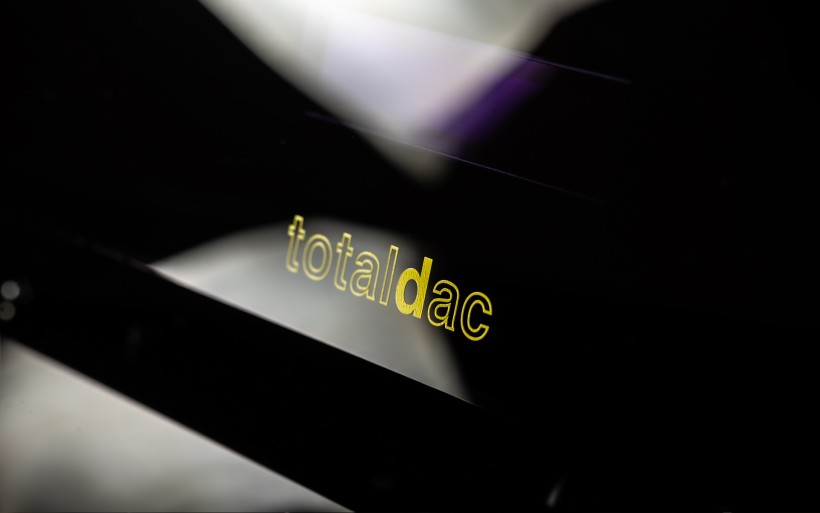 While Vincent’s conversion method of choice hasn’t changed since our first rodeo, not too long ago his DAC roster underwent a major overhaul due to the development of the new Unity architecture, which promises us higher-tiered performance via a better clock distribution, a lower jitter, a lower PSU rail impedance and also a lower noise floor in the digital section. The brand new class-A output section is now built upon exclusively discrete components. From the d1-biunity’s on-site description we also learn that about 200 parts were either upgraded or added to its circuit. If you own any non-Unity Totaldac, no worries. Vincent’s older machines can undergo a factory rework to their latest versions and enjoy two years of additional warranty.
While Vincent’s conversion method of choice hasn’t changed since our first rodeo, not too long ago his DAC roster underwent a major overhaul due to the development of the new Unity architecture, which promises us higher-tiered performance via a better clock distribution, a lower jitter, a lower PSU rail impedance and also a lower noise floor in the digital section. The brand new class-A output section is now built upon exclusively discrete components. From the d1-biunity’s on-site description we also learn that about 200 parts were either upgraded or added to its circuit. If you own any non-Unity Totaldac, no worries. Vincent’s older machines can undergo a factory rework to their latest versions and enjoy two years of additional warranty.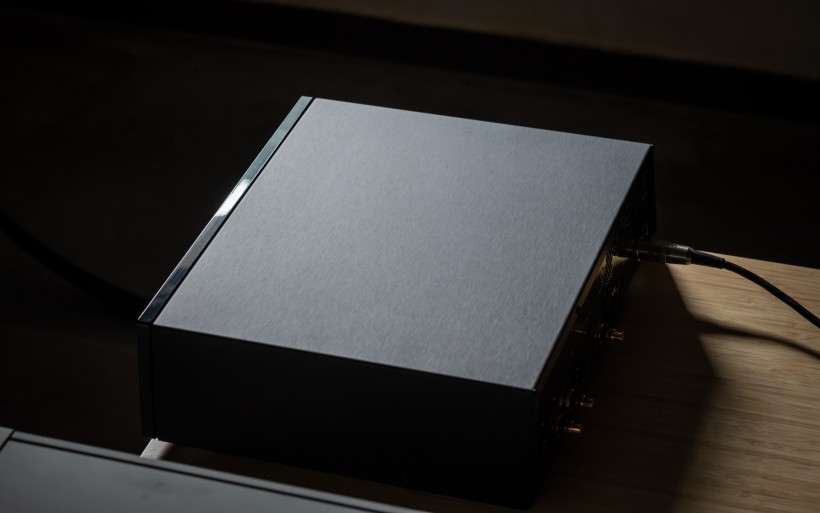 Should you wonder how this review came to be, in early December my buddy Adam treated himself with a Totaldac d1-unity. Since we’re from the same city, I snatched this machine for two days. Thoroughly impressed by it I contacted Vincent. He suggested sending a model one tier above, which at that point had no reviews yet. By all means, let me do the honours. Several days later it was delivered to my address and the game was afoot. It’s worth knowing that this d1-biunity loaner featured two sound-improving extras and one related to its functionality. From the manufacturer’s description we learn that the “live-clocking” option priced at €800 takes the form of an internally applied additional circuit, developed to optimize the clock and digital signal distribution to effectively increase the sampling precision. The master clock that now depends less on the FPGA FIFO rejects more jitter from the input in the process. The standard external PSU for the d1-biunity houses a toroidal transformer, while the “live-power” unit in the alike enclosure is the upgrade that accommodates a custom-made EI transformer by the French specialist company Electra Sud-Ouest (ESO). The latter ordered instead of the stock PSU is €670 and €1’200 if purchased later on. Lastly, the standard d1-biunity doesn’t do DSD. The option that unlocks processing such data via DoP is €350 and my unit had that included. Add it all up and the sum total for it as reviewed is €20’070.
Should you wonder how this review came to be, in early December my buddy Adam treated himself with a Totaldac d1-unity. Since we’re from the same city, I snatched this machine for two days. Thoroughly impressed by it I contacted Vincent. He suggested sending a model one tier above, which at that point had no reviews yet. By all means, let me do the honours. Several days later it was delivered to my address and the game was afoot. It’s worth knowing that this d1-biunity loaner featured two sound-improving extras and one related to its functionality. From the manufacturer’s description we learn that the “live-clocking” option priced at €800 takes the form of an internally applied additional circuit, developed to optimize the clock and digital signal distribution to effectively increase the sampling precision. The master clock that now depends less on the FPGA FIFO rejects more jitter from the input in the process. The standard external PSU for the d1-biunity houses a toroidal transformer, while the “live-power” unit in the alike enclosure is the upgrade that accommodates a custom-made EI transformer by the French specialist company Electra Sud-Ouest (ESO). The latter ordered instead of the stock PSU is €670 and €1’200 if purchased later on. Lastly, the standard d1-biunity doesn’t do DSD. The option that unlocks processing such data via DoP is €350 and my unit had that included. Add it all up and the sum total for it as reviewed is €20’070.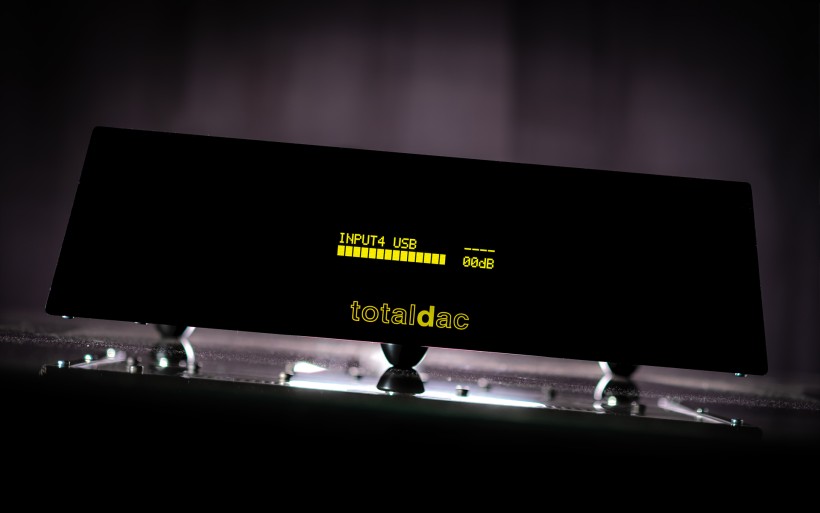 A double cardboard nested the key ingredient wrapped in foil and in-between two foam liners, while the PSU for it had its own foamy compartment. The included RC was plastic and rather ordinary, so I wouldn’t mind seeing something fancier considering today’s retail price. On the upside, this remote wand works as intended and upon setting up all the options to my liking I didn’t have to use it much. Totaldac d1-biunity measures (H x W x D) 110 x 360 x 290mm and weighs 7kg, so is rather compact given its posh pedigree and very easy to lift and move around. The on-site specs list digital data support up to 24-bit/192kHz, non-standard 3.5/7Vrms on RCA/XLR outputs and power draw up to 16.5W. All Totaldac DACs share the same trapezoid enclosure comprised of a U-shaped brushed aluminium hood atop the perforated aluminium underside and rear. The stock front panel made of glossy PMMA can become silver aluminium forehead for €420 extra, while hard anti-vibration pucks (€445/4) can replace standard-issue rubber footers. Since we’re at additional upgrades, the optional bass boost utility raises the cost of the product by 20% and USB powered from its own internal PSU is €700. The motto is clear. Pay for what you really need.
A double cardboard nested the key ingredient wrapped in foil and in-between two foam liners, while the PSU for it had its own foamy compartment. The included RC was plastic and rather ordinary, so I wouldn’t mind seeing something fancier considering today’s retail price. On the upside, this remote wand works as intended and upon setting up all the options to my liking I didn’t have to use it much. Totaldac d1-biunity measures (H x W x D) 110 x 360 x 290mm and weighs 7kg, so is rather compact given its posh pedigree and very easy to lift and move around. The on-site specs list digital data support up to 24-bit/192kHz, non-standard 3.5/7Vrms on RCA/XLR outputs and power draw up to 16.5W. All Totaldac DACs share the same trapezoid enclosure comprised of a U-shaped brushed aluminium hood atop the perforated aluminium underside and rear. The stock front panel made of glossy PMMA can become silver aluminium forehead for €420 extra, while hard anti-vibration pucks (€445/4) can replace standard-issue rubber footers. Since we’re at additional upgrades, the optional bass boost utility raises the cost of the product by 20% and USB powered from its own internal PSU is €700. The motto is clear. Pay for what you really need.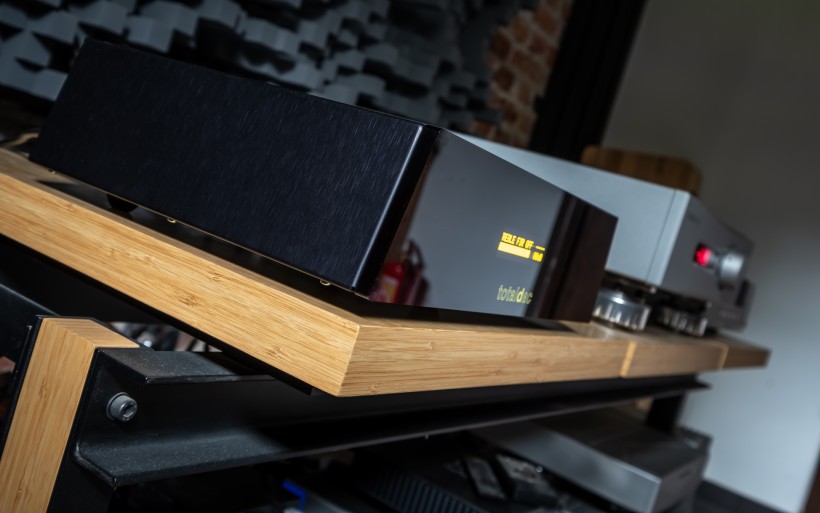 It should be said out loud that, while they’re nicely put together and practical, Totaldac enclosures are compact and visually inconspicuous. Personally I don’t mind and actually like their signature trapezoidal exterior that can’t be mistaken with anything else. I can however imagine that enthusiasts willing to spend €20k or more on a DAC may wonder what is it that they’re paying for. Performance is the obvious answer. Totaldac designs are for aware shoppers who don’t care about visual bling and most likely are already familiar with the brand, so they appreciate Vincent’s conversion method of choice and how he implements it. The man’s approach in this regard is unlike any other R-2R circuit built one tiny resistor at a time. To just the right audience this truly is a big attractor. Moving on, the d1-biunity’s analog outputs are regulated, so nothing stands in the way of connecting a power amp directly to them. The small but perfectly readable yellow OLED display on the front panel shows volume level, actively selected digital input and treble (FIR) filter on/off. The included RC grants us access to the machine’s simple menu, where we can mute playback, change the absolute phase, adjust channel balance, connect power to signal ground and turn off the screen, which is useful considering that some may find it too bright and there’s no option to gradually dim it. The business end on the left is busy with one of each XLR and RCA inputs, followed by coaxial S/PDIF, AES/EBU, optical S/PDIF and USB, while the neighbouring non-standard power inlet accepts a cord from the external PSU that connects to the mains. The on/off rocker on this power supply puts the device in the standby mode, while the self-explanatory red button on the RC makes it fully operational.
It should be said out loud that, while they’re nicely put together and practical, Totaldac enclosures are compact and visually inconspicuous. Personally I don’t mind and actually like their signature trapezoidal exterior that can’t be mistaken with anything else. I can however imagine that enthusiasts willing to spend €20k or more on a DAC may wonder what is it that they’re paying for. Performance is the obvious answer. Totaldac designs are for aware shoppers who don’t care about visual bling and most likely are already familiar with the brand, so they appreciate Vincent’s conversion method of choice and how he implements it. The man’s approach in this regard is unlike any other R-2R circuit built one tiny resistor at a time. To just the right audience this truly is a big attractor. Moving on, the d1-biunity’s analog outputs are regulated, so nothing stands in the way of connecting a power amp directly to them. The small but perfectly readable yellow OLED display on the front panel shows volume level, actively selected digital input and treble (FIR) filter on/off. The included RC grants us access to the machine’s simple menu, where we can mute playback, change the absolute phase, adjust channel balance, connect power to signal ground and turn off the screen, which is useful considering that some may find it too bright and there’s no option to gradually dim it. The business end on the left is busy with one of each XLR and RCA inputs, followed by coaxial S/PDIF, AES/EBU, optical S/PDIF and USB, while the neighbouring non-standard power inlet accepts a cord from the external PSU that connects to the mains. The on/off rocker on this power supply puts the device in the standby mode, while the self-explanatory red button on the RC makes it fully operational. Internally Totaldac d1-biunity doesn’t resemble any other DAC on the market. The massive copper insert on the ground floor improves the structure’s rigidity and limits EMI/RFI which, believe it or not, positively impacts sonics. For this reason i.e. the best and very expensive Aavik and Kondo products feature fully copper interiors. The d1-biunity’s lower PCB bolted to the copper base accommodates the fully discrete output and power stage that’s busy with a blend of capacitors from several different suppliers. The upper deck houses a large copper-shielded master clock just the to the FPGA logic that, among other things, oversees the switching process of the nearby resistor spread across four rows of six available. The remaining two are reserved for the upper-echelon d1-triunity DAC.
Internally Totaldac d1-biunity doesn’t resemble any other DAC on the market. The massive copper insert on the ground floor improves the structure’s rigidity and limits EMI/RFI which, believe it or not, positively impacts sonics. For this reason i.e. the best and very expensive Aavik and Kondo products feature fully copper interiors. The d1-biunity’s lower PCB bolted to the copper base accommodates the fully discrete output and power stage that’s busy with a blend of capacitors from several different suppliers. The upper deck houses a large copper-shielded master clock just the to the FPGA logic that, among other things, oversees the switching process of the nearby resistor spread across four rows of six available. The remaining two are reserved for the upper-echelon d1-triunity DAC.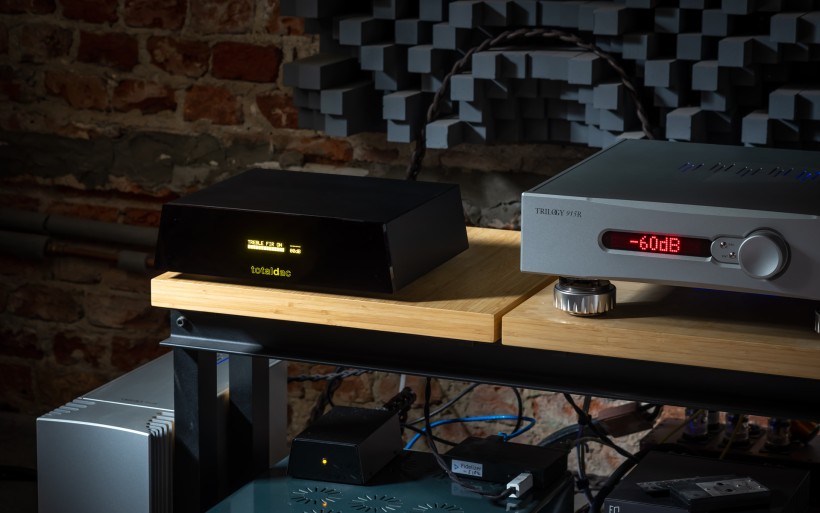 The original plan how to review the d1-biunity loaner had the LampizatOr Pacific DAC in it. That changed, the latter machine now enjoys a new home. Meanwhile, a major upgrade is on the horizon. I’ll have to wait several weeks before it arrives, but no matter. I had just the sparring partner for today’s Totaldac anyway. AMR DP-777SE is an interesting design that sports tubed outputs, fully balanced circuitry and twin D/A conversion hearts. Quad multibit UDA1305ATs on FPGA handle 16-bit/44.1kHz files, while the two neighboring ΔΣ chips process everything above Redbooks up to 24-bit/192kHz data. This old AMR is gold in a way exclusive only to R-2R designs. It aged really well and sounds fine, to a point where even today it goes toe to toe with many modern DACs. Since the d1-biunity is of the alike noble resistor-ladder breed too, their comparison was hardly inappropriate. The staggering financial gap far less so, but it is what it is.
The original plan how to review the d1-biunity loaner had the LampizatOr Pacific DAC in it. That changed, the latter machine now enjoys a new home. Meanwhile, a major upgrade is on the horizon. I’ll have to wait several weeks before it arrives, but no matter. I had just the sparring partner for today’s Totaldac anyway. AMR DP-777SE is an interesting design that sports tubed outputs, fully balanced circuitry and twin D/A conversion hearts. Quad multibit UDA1305ATs on FPGA handle 16-bit/44.1kHz files, while the two neighboring ΔΣ chips process everything above Redbooks up to 24-bit/192kHz data. This old AMR is gold in a way exclusive only to R-2R designs. It aged really well and sounds fine, to a point where even today it goes toe to toe with many modern DACs. Since the d1-biunity is of the alike noble resistor-ladder breed too, their comparison was hardly inappropriate. The staggering financial gap far less so, but it is what it is.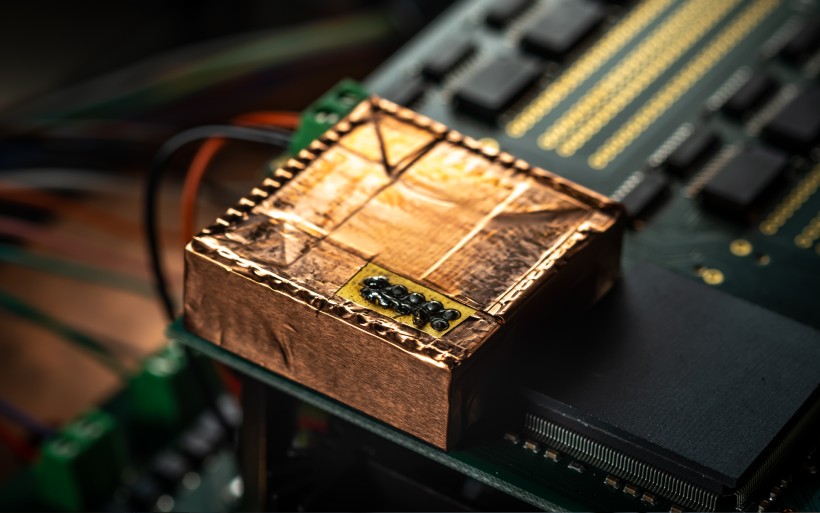 Both the Totaldac and AMR saw the Boenicke Power Gate outlet multiplier’s captive M2 cords. DIY cables built upon LessLoss entropic-processed C-MARCs connected the two DACs to the Trilogy 915R preamp’s XLR inputs. From there the same company’s 995R mono amps took over. Here I have a small confession to make. Several days ago one of my sound|kaos Vox 3afw monitors got hit, which resulted in damage to its voice coil and motor. That turned out nigh impossible to fix without a specialist jig. Long story short, a new full-range transducer had to be ordered, which is why in this assignment I had to rely solely on Boenicke W11 SE+ floorstanders. I’m very happy that I did and shortly I’ll explain why. To accommodate this load, the two 995Rs operated as class AB devices instead of their usual “eco A” bias. To swap between the DACs, I had to only reconnect a USB cable and change inputs on the pre. The Statement server/streamer recognized their USB receivers pretty much instantly. Since the d1-biunity outputs voltages higher than the AMR, leveling them after each back and forth meant adjusting volume on the 915R by about 5dB.
Both the Totaldac and AMR saw the Boenicke Power Gate outlet multiplier’s captive M2 cords. DIY cables built upon LessLoss entropic-processed C-MARCs connected the two DACs to the Trilogy 915R preamp’s XLR inputs. From there the same company’s 995R mono amps took over. Here I have a small confession to make. Several days ago one of my sound|kaos Vox 3afw monitors got hit, which resulted in damage to its voice coil and motor. That turned out nigh impossible to fix without a specialist jig. Long story short, a new full-range transducer had to be ordered, which is why in this assignment I had to rely solely on Boenicke W11 SE+ floorstanders. I’m very happy that I did and shortly I’ll explain why. To accommodate this load, the two 995Rs operated as class AB devices instead of their usual “eco A” bias. To swap between the DACs, I had to only reconnect a USB cable and change inputs on the pre. The Statement server/streamer recognized their USB receivers pretty much instantly. Since the d1-biunity outputs voltages higher than the AMR, leveling them after each back and forth meant adjusting volume on the 915R by about 5dB.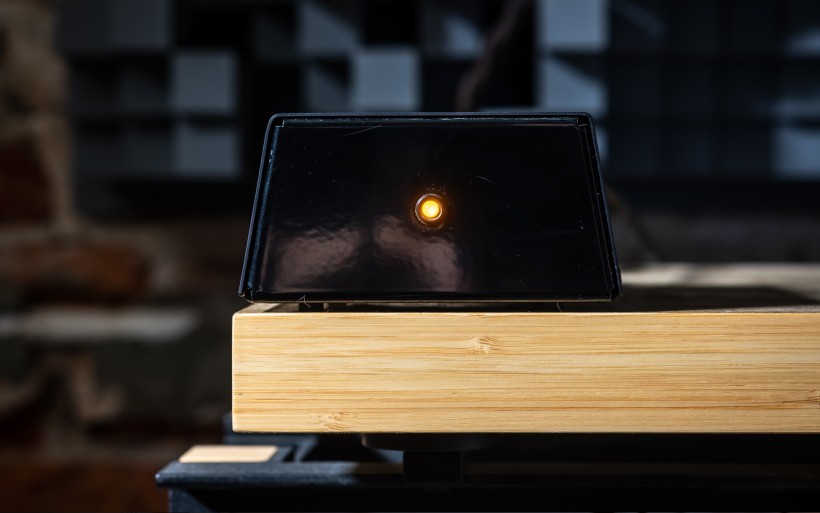 Audio Reveal Hercules is the most recent R-2R type that I had the pleasure of reviewing. One particular paragraph from that story nicely encapsulates what I think about its multibit family in general, and also what I want to say now about the d1-biunity DAC. Here goes: “The digital heart of the Hercules belongs to a family of ICs with several well-pronounced sonic features, or at least that’s what my experience tells me. Such products based on either old R-2R chips or their modern discrete counterparts [ed. – as in the Totaldac] present music in an elegant, pleasantly physiological and soft fashion that keeps extreme magnification at bay. This is quite an oversimplification that demands explanations. Let’s then assume that a fast, lean, ethereal, open, distant, detailed, cool, contoured, hard and bright sound occupies one end of the scale, while the other has voicing built upon darkness, density, warmth, roundness, softness and spatial intimacy. In this context, multibit DACs are closer to the latter. However, warmth, density, softness and intimacy shape their sound to a much lesser degree than elasticity, tonal richness, dynamics, tactility and that fine organic flavor which results from these qualities. This particular trait in my glossary unfolds into a specific tissue on instruments and vocals that boosts their mass, adds color and rounds out their outlines a bit, but also makes them as nimble and vivid as they are substantial, moist, palpable and easy to intake. The organic charm in question is not the same as just plain warmth and density, which even slightly overdone screw up agility and expressiveness, steal oxygen and kill particles floating in the air. The difference is fundamental, though not exactly easy to put into words. Listening is the only way to fully grasping what I’m on about here. Let’s just say that R-2R DACs are inherently a bit dense, but not overly sweet, bulky and ultimately unclear. I find their sound aromatic, expressive, resolving, moist and structurally complex instead. Audio Reveal Hercules has these traits in spades. More importantly, it charms with them in such a way that the world around us becomes irrelevant. Last time I checked, that was the main goal of this hobby.”
Audio Reveal Hercules is the most recent R-2R type that I had the pleasure of reviewing. One particular paragraph from that story nicely encapsulates what I think about its multibit family in general, and also what I want to say now about the d1-biunity DAC. Here goes: “The digital heart of the Hercules belongs to a family of ICs with several well-pronounced sonic features, or at least that’s what my experience tells me. Such products based on either old R-2R chips or their modern discrete counterparts [ed. – as in the Totaldac] present music in an elegant, pleasantly physiological and soft fashion that keeps extreme magnification at bay. This is quite an oversimplification that demands explanations. Let’s then assume that a fast, lean, ethereal, open, distant, detailed, cool, contoured, hard and bright sound occupies one end of the scale, while the other has voicing built upon darkness, density, warmth, roundness, softness and spatial intimacy. In this context, multibit DACs are closer to the latter. However, warmth, density, softness and intimacy shape their sound to a much lesser degree than elasticity, tonal richness, dynamics, tactility and that fine organic flavor which results from these qualities. This particular trait in my glossary unfolds into a specific tissue on instruments and vocals that boosts their mass, adds color and rounds out their outlines a bit, but also makes them as nimble and vivid as they are substantial, moist, palpable and easy to intake. The organic charm in question is not the same as just plain warmth and density, which even slightly overdone screw up agility and expressiveness, steal oxygen and kill particles floating in the air. The difference is fundamental, though not exactly easy to put into words. Listening is the only way to fully grasping what I’m on about here. Let’s just say that R-2R DACs are inherently a bit dense, but not overly sweet, bulky and ultimately unclear. I find their sound aromatic, expressive, resolving, moist and structurally complex instead. Audio Reveal Hercules has these traits in spades. More importantly, it charms with them in such a way that the world around us becomes irrelevant. Last time I checked, that was the main goal of this hobby.”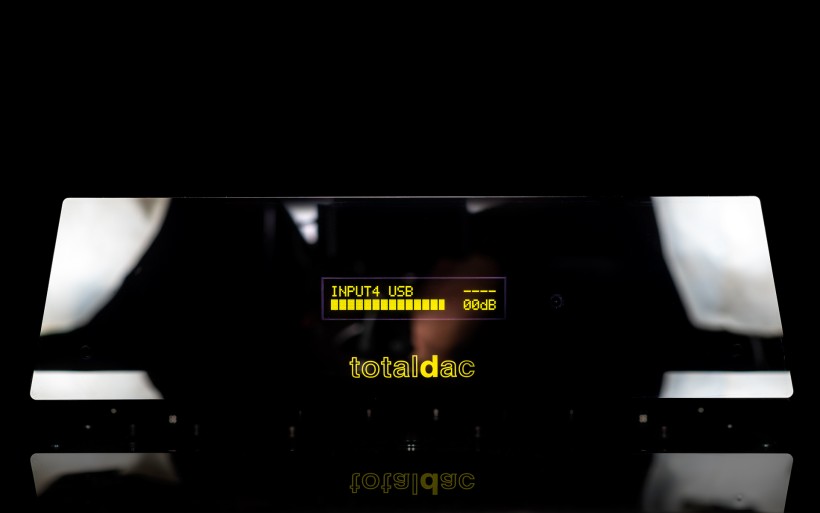 Unsurprisingly, everything above perfectly applied to the d1-biunity, too. Considering what this product is, it really should. During several days of listening sessions with it, the impression of its exceptional correctness, flow and ease was constantly there. These three traits were sensible regardless of my music choices. The Totaldac did everything truly well and without standing out in any way in particular, as if its primary goal narrowed down to the wholly supportive action for the electronics nearby. That’s how high-tiered transparency emerged as the d1-biunity’s first major asset. Soon there were more discoveries to be made, but first things first. Here a context comprised of the three other R-2R designs comes in handy. Although their individual reviews are several years apart, the key takeaways of these stories are no less valid now. While the local Hercules DAC sounded like a full-fledged multibit machine, its directly-heated output stage audibly reinforced all its speedy traits. The Denafrips Terminator Plus reviewed here in September 2021 flaunted the same core aroma, albeit its lower tonal balance secured a noticeably dense, soft, calm, somewhat hooded, grounded, romantic, fluffy and less articulated profile. The AMR would fit somewhere in between these two with its soft bass, average quickness and well-illuminated quite airy overall presentation. While I couldn’t compare the d1-biunity to any DAC other than the DP-777SE, I think that it shares the most with the Hercules. That’s the general lay of the land.
Unsurprisingly, everything above perfectly applied to the d1-biunity, too. Considering what this product is, it really should. During several days of listening sessions with it, the impression of its exceptional correctness, flow and ease was constantly there. These three traits were sensible regardless of my music choices. The Totaldac did everything truly well and without standing out in any way in particular, as if its primary goal narrowed down to the wholly supportive action for the electronics nearby. That’s how high-tiered transparency emerged as the d1-biunity’s first major asset. Soon there were more discoveries to be made, but first things first. Here a context comprised of the three other R-2R designs comes in handy. Although their individual reviews are several years apart, the key takeaways of these stories are no less valid now. While the local Hercules DAC sounded like a full-fledged multibit machine, its directly-heated output stage audibly reinforced all its speedy traits. The Denafrips Terminator Plus reviewed here in September 2021 flaunted the same core aroma, albeit its lower tonal balance secured a noticeably dense, soft, calm, somewhat hooded, grounded, romantic, fluffy and less articulated profile. The AMR would fit somewhere in between these two with its soft bass, average quickness and well-illuminated quite airy overall presentation. While I couldn’t compare the d1-biunity to any DAC other than the DP-777SE, I think that it shares the most with the Hercules. That’s the general lay of the land.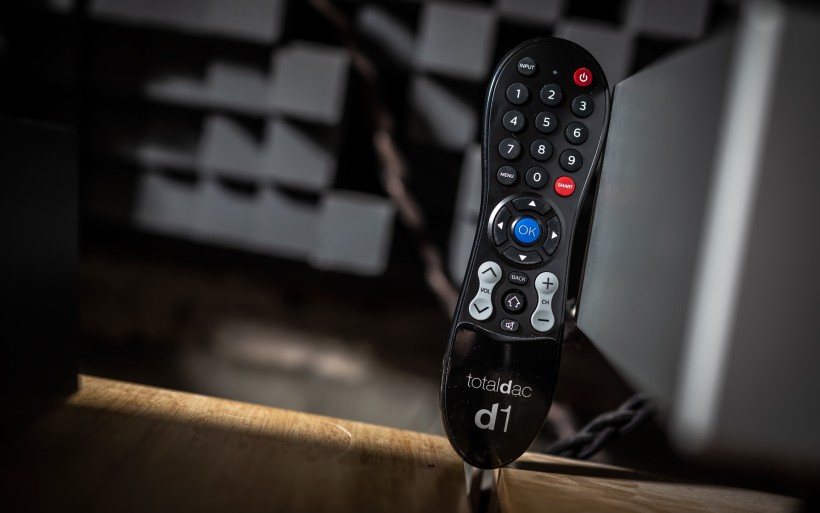 While basic R-2R DACs are packed with color, fatigue-free and texturally moist by design, their kind tends to be a touch darkish and not quite as immediate and dynamically proficient as modern ΔΣ devices. Vincent’s new Unity architecture however promises us wider contrast ratio atop the extra clarity, tone and spatial presence. Marketing blurb all around? Not today. A mere one swap from the stationary AMR to the d1-biunity was all it took to get the memo. The latter’s sound wasn’t dark in the slightest. Quite the contrary. It brimmed with textures, fruitiness, spatial nuances and that particularly fetching easefully served radiance not many DACs know how to make. The result was fully engaged, direct, exceptionally fluid and very much alive. The DP-777SE remained very listenable still, but quite frankly ordinary in comparison. It didn’t do anything specific that would keep me at the edge of the listening chair. The Totaldac on the other hand felt special about everything it did. To clarify, it wasn’t one specific aspect that clearly communicated its higher-tiered MO. The utmost tasteful combination of them all was what made all the difference. The way how the French blended qualities related to color with those that make music intense and very digestible was, by my standards at least, artful. It sounded like a product that you pay a lot for, but knowing that it’ll remain in your system for years to come. Just so we’re clear, way back the AMR did something similar too, but on a far lesser scale.
While basic R-2R DACs are packed with color, fatigue-free and texturally moist by design, their kind tends to be a touch darkish and not quite as immediate and dynamically proficient as modern ΔΣ devices. Vincent’s new Unity architecture however promises us wider contrast ratio atop the extra clarity, tone and spatial presence. Marketing blurb all around? Not today. A mere one swap from the stationary AMR to the d1-biunity was all it took to get the memo. The latter’s sound wasn’t dark in the slightest. Quite the contrary. It brimmed with textures, fruitiness, spatial nuances and that particularly fetching easefully served radiance not many DACs know how to make. The result was fully engaged, direct, exceptionally fluid and very much alive. The DP-777SE remained very listenable still, but quite frankly ordinary in comparison. It didn’t do anything specific that would keep me at the edge of the listening chair. The Totaldac on the other hand felt special about everything it did. To clarify, it wasn’t one specific aspect that clearly communicated its higher-tiered MO. The utmost tasteful combination of them all was what made all the difference. The way how the French blended qualities related to color with those that make music intense and very digestible was, by my standards at least, artful. It sounded like a product that you pay a lot for, but knowing that it’ll remain in your system for years to come. Just so we’re clear, way back the AMR did something similar too, but on a far lesser scale.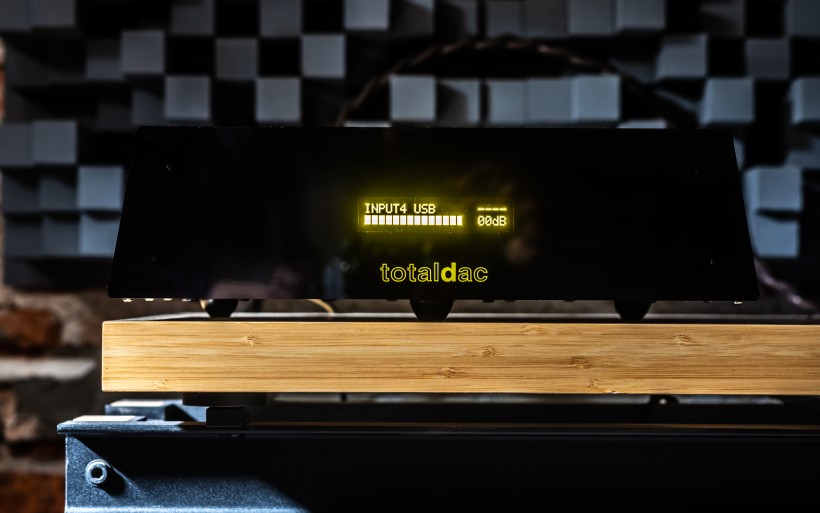 Prior to listening to today’s Totaldac for the first time, I had some expectations primarily related to the number of parts in its fancy resistor matrix. The more these Vishays there are on the job, the greater is the circuit’s switching accuracy. That’s how in this roster one gets access to a higher-tiered sound. My loaner sample packed twice as many in comparison to the manufacturer’s entry-level d1-unity model, which most likely would also impress with the same type of desirable wholesomeness and correctness across the board. Having the two on the same rack would’ve been convenient. Even though I couldn’t map the relevant differences between them, I had my guesses anyway. While the d1-biunity very quickly struck me as a highly competent multibit type, the more time I spent with it, the more alive, spatially open, nimble, elastic, powerful and resolved it became. I hadn’t noticed that right away because early on my focus was on the breed’s usual perks related to color, tone, atmosphere and the lot. It was either this, or I was simply biased given the d1-biunity’s innards. Once I finally cranked up volume and steered from calm instrumental and vocal stuff to party music, then this DAC revealed the second ace it had up its sleeve the entire time.
Prior to listening to today’s Totaldac for the first time, I had some expectations primarily related to the number of parts in its fancy resistor matrix. The more these Vishays there are on the job, the greater is the circuit’s switching accuracy. That’s how in this roster one gets access to a higher-tiered sound. My loaner sample packed twice as many in comparison to the manufacturer’s entry-level d1-unity model, which most likely would also impress with the same type of desirable wholesomeness and correctness across the board. Having the two on the same rack would’ve been convenient. Even though I couldn’t map the relevant differences between them, I had my guesses anyway. While the d1-biunity very quickly struck me as a highly competent multibit type, the more time I spent with it, the more alive, spatially open, nimble, elastic, powerful and resolved it became. I hadn’t noticed that right away because early on my focus was on the breed’s usual perks related to color, tone, atmosphere and the lot. It was either this, or I was simply biased given the d1-biunity’s innards. Once I finally cranked up volume and steered from calm instrumental and vocal stuff to party music, then this DAC revealed the second ace it had up its sleeve the entire time.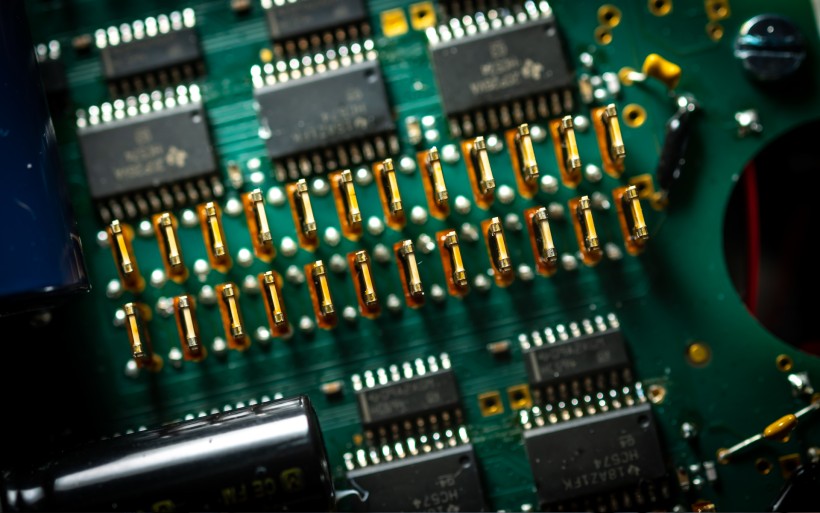 Toto’s “Manuela Run” is a very nicely recorded explosive song that’s very helpful in mapping dynamics, momentum, snap, control and quickness. On this particular track, and many more which I’ve listened to shortly after, the gap between the AMR and Totaldac was criminally large. The way how the latter got to work rendered my backup DAC as slow, distant, wooly on bass and all in all monotonous. That was a hard pill to swallow, while a selection of songs by Tool, Kodo and Idles reinforced the sensation. On such fare the Totaldac was enormously ripped, spatially large, immediate, slamming, punctual, fresh, dynamically charged, effortless, smooth, spot on contoured, articulated and still very easy to listen to. In these regards it was as gifted as the Hercules and Pacific were before it. What impressed me the most however was the fact that the d1-biunity managed to pull this without directly-heated tubes on board. As spatially monstrous, informative and keen on bass duties as they are, Boenicke floorstanders played the enabler that gracefully magnified the effect. This is why I found them enormously useful this time around. As for the Totaldac’s unusually sporty behavior atop all its other virtues, I truly hadn’t seen that coming and started to wonder. If copious amounts of color, sensuality, moisture etc. are inherent to the R-2R family where this French specimen also belongs, then perhaps all the extra resistors inside it atop the manufacturer’s new Unity architecture were just the stuff that unlocked a dynamic reserve this large? Or was it Vincent’s live-clocking option? Or a power supply built upon a kosher EI transformer customized for this specific project? Maybe all these factors equally played their part?
Toto’s “Manuela Run” is a very nicely recorded explosive song that’s very helpful in mapping dynamics, momentum, snap, control and quickness. On this particular track, and many more which I’ve listened to shortly after, the gap between the AMR and Totaldac was criminally large. The way how the latter got to work rendered my backup DAC as slow, distant, wooly on bass and all in all monotonous. That was a hard pill to swallow, while a selection of songs by Tool, Kodo and Idles reinforced the sensation. On such fare the Totaldac was enormously ripped, spatially large, immediate, slamming, punctual, fresh, dynamically charged, effortless, smooth, spot on contoured, articulated and still very easy to listen to. In these regards it was as gifted as the Hercules and Pacific were before it. What impressed me the most however was the fact that the d1-biunity managed to pull this without directly-heated tubes on board. As spatially monstrous, informative and keen on bass duties as they are, Boenicke floorstanders played the enabler that gracefully magnified the effect. This is why I found them enormously useful this time around. As for the Totaldac’s unusually sporty behavior atop all its other virtues, I truly hadn’t seen that coming and started to wonder. If copious amounts of color, sensuality, moisture etc. are inherent to the R-2R family where this French specimen also belongs, then perhaps all the extra resistors inside it atop the manufacturer’s new Unity architecture were just the stuff that unlocked a dynamic reserve this large? Or was it Vincent’s live-clocking option? Or a power supply built upon a kosher EI transformer customized for this specific project? Maybe all these factors equally played their part?
Beats me. I’m no DAC engineer. The odds are that my guesses are all wrong, so I’ll stick to trusting my ears instead. On that note, while the d1-biunity follows the manufacturer’s modest utilitarian dress code, that’s just a disguise for sonic excellence of a very high calibre. This machine not only goes above and beyond the posh R-2R topology’s usual, but does so without means which not too long ago I considered as necessities for securing an outcome dynamically, tonally and spatially this fantastic. Even though this clearly is a high-performance proposition mainly for enthusiasts with deep wallets and brand familiarity, such audience may find the expense fully justified. Considering how it goes about its business, as a paying customer I would. My tip of the hat to Vincent for refining his formula to a degree that spawned this wonderfully voiced effort. Considering how brilliantly it sounded, it’s also thrilling to think what its siblings higher up in the roster are capable of.
Associated Equipment:
- Amplifier: Trilogy 995R, FirstWatt F7, Enleum AMP-23R
- DAC: AMR DP-777SE
- Speakers: Boenicke Audio W11 SE+, sound|kaos Vox 3afw
- Transport: Innuos Statement, fidata HFAS1-S10U
- Preamplifier: Trilogy 915R, Thöress DFP
- Speaker cables: Boenicke Audio S3, LessLoss C-MARC
- Headphones: HifiMan Susvara
- Speaker signal conditioning: LessLoss Firewall for Loudspeakers, Boenicke ComDev
- Anti-vibration conditioning: 6x Carbide Base Diamond (under speakers), 6x Carbide Base Micro Diamond with TwinDamp inserts and spikes (under DAC and pre)
- Interconnects: LessLoss Entropic Process C-MARC, Boenicke Audio IC3 CG
- Power components: Gigawatt PC-3 SE EVO+/LC-3 EVO, LessLoss C-MARC, LessLoss Entropic Process C-MARC, Boenicke Audio Power Gate, ISOL-8 Prometheus
- USB components: iFi audio Mercury3.0
- Rack: Franc Audio Accesories Wood Block Rack 1+3
- Network: Fidelizer EtherStream, Linksys WRT160N
- Music: NativeDSD
Retail prices of reviewed components in EU (incl. VAT):
- Totaldac d1-biunity as reviewed: €20’070
- Totaldac d1-biunity – standard: €18’250
- Totaldac live-clocking upgrade: €800
- Totaldac live-power PSU upgrade: €670
- DSD via DoP utility: €350
Manufacturer: Totaldac


